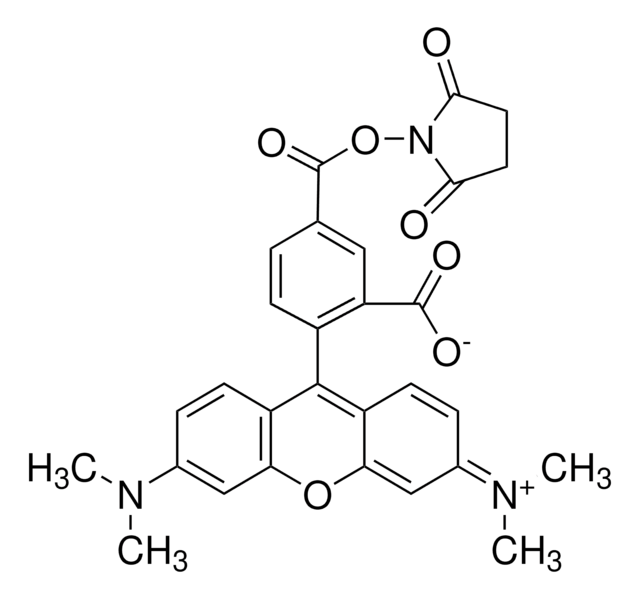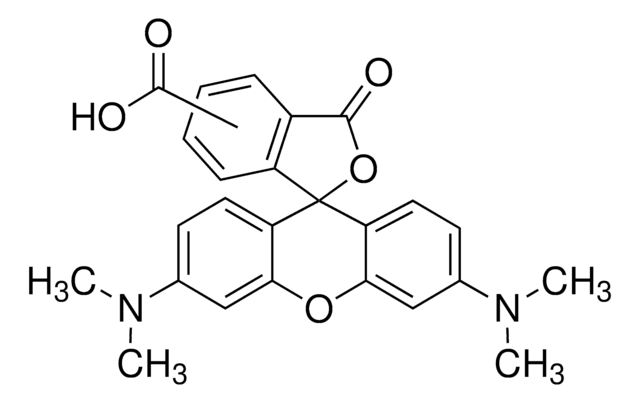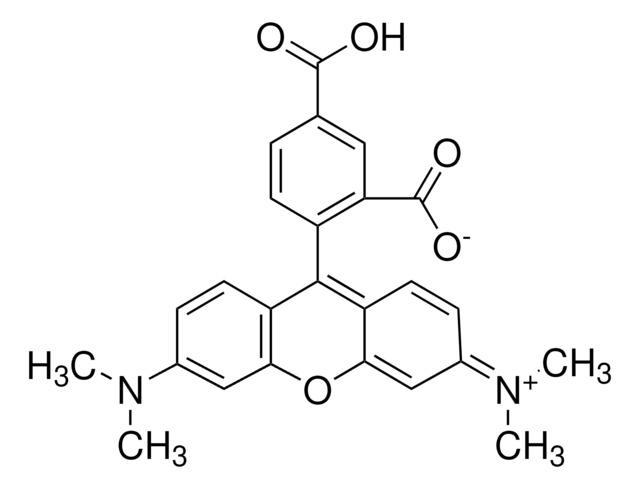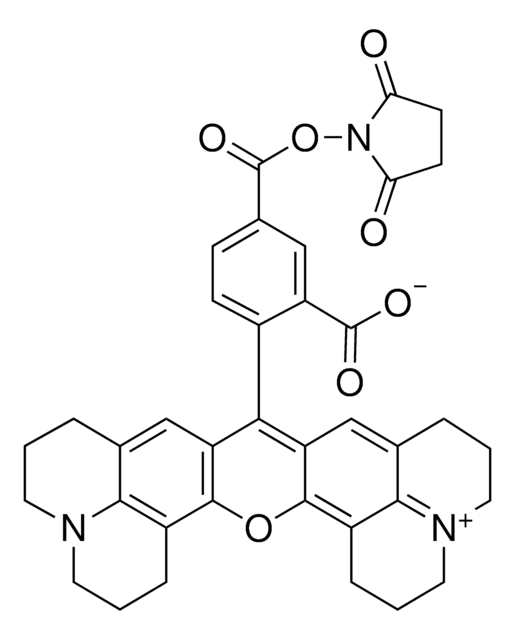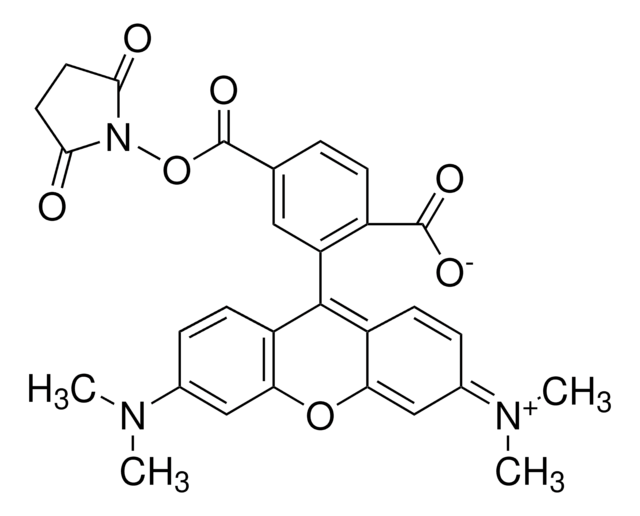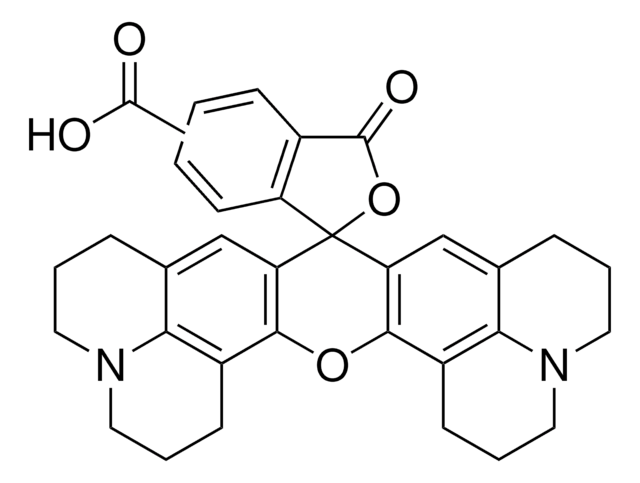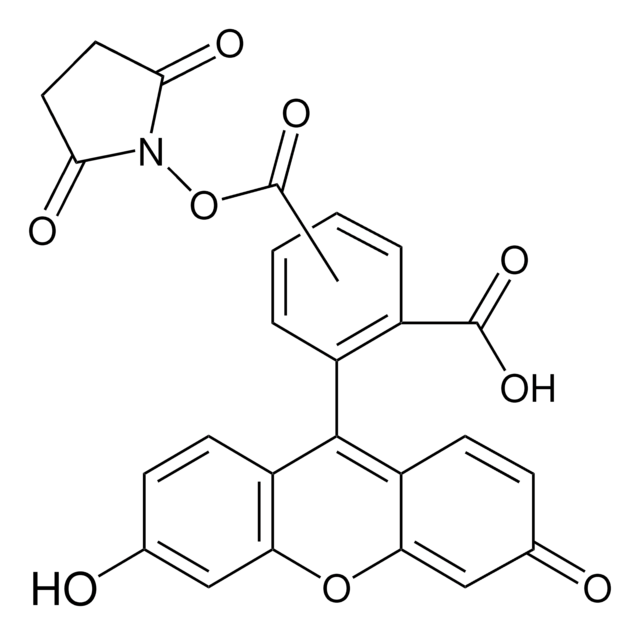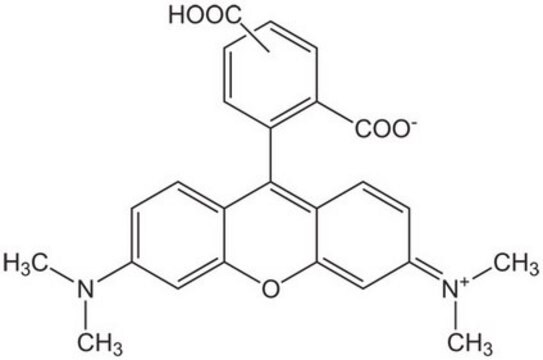21955
5(6)-Carboxytetramethylrhodamine N-succinimidyl ester
BioReagent, suitable for fluorescence, ≥70% (coupling to amines)
About This Item
Prodotti consigliati
Nome Commerciale
BioReagent
Saggio
≥70% (coupling to amines)
Forma fisica
powder
Solubilità
DMF: soluble
acetonitrile: soluble
methanol: soluble
Fluorescenza
λex 543 nm; λem 576 nm in methanol
λex 554 nm; λem 584 nm in 0.1 M phosphate pH 8.0
Compatibilità
suitable for fluorescence
Temperatura di conservazione
−20°C
Stringa SMILE
CN(C)c1ccc2c(Oc3cc(ccc3C24OC(=O)c5cc(ccc45)C(=O)ON6C(=O)CCC6=O)N(C)C)c1
InChI
1S/C29H25N3O7/c1-30(2)17-6-9-21-23(14-17)37-24-15-18(31(3)4)7-10-22(24)29(21)20-8-5-16(13-19(20)28(36)38-29)27(35)39-32-25(33)11-12-26(32)34/h5-10,13-15H,11-12H2,1-4H3
CXYYHBMOVJJZTD-UHFFFAOYSA-N
Cerchi prodotti simili? Visita Guida al confronto tra prodotti
Applicazioni
Confezionamento
Altre note
Codice della classe di stoccaggio
11 - Combustible Solids
Classe di pericolosità dell'acqua (WGK)
WGK 3
Punto d’infiammabilità (°F)
Not applicable
Punto d’infiammabilità (°C)
Not applicable
Dispositivi di protezione individuale
Eyeshields, Gloves, type N95 (US)
Certificati d'analisi (COA)
Cerca il Certificati d'analisi (COA) digitando il numero di lotto/batch corrispondente. I numeri di lotto o di batch sono stampati sull'etichetta dei prodotti dopo la parola ‘Lotto’ o ‘Batch’.
Possiedi già questo prodotto?
I documenti relativi ai prodotti acquistati recentemente sono disponibili nell’Archivio dei documenti.
Il team dei nostri ricercatori vanta grande esperienza in tutte le aree della ricerca quali Life Science, scienza dei materiali, sintesi chimica, cromatografia, discipline analitiche, ecc..
Contatta l'Assistenza Tecnica.